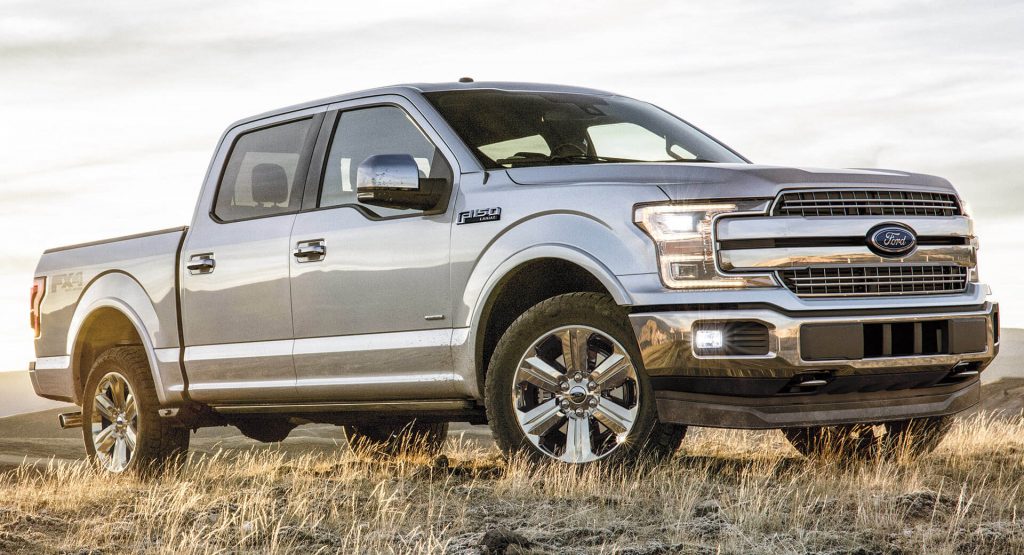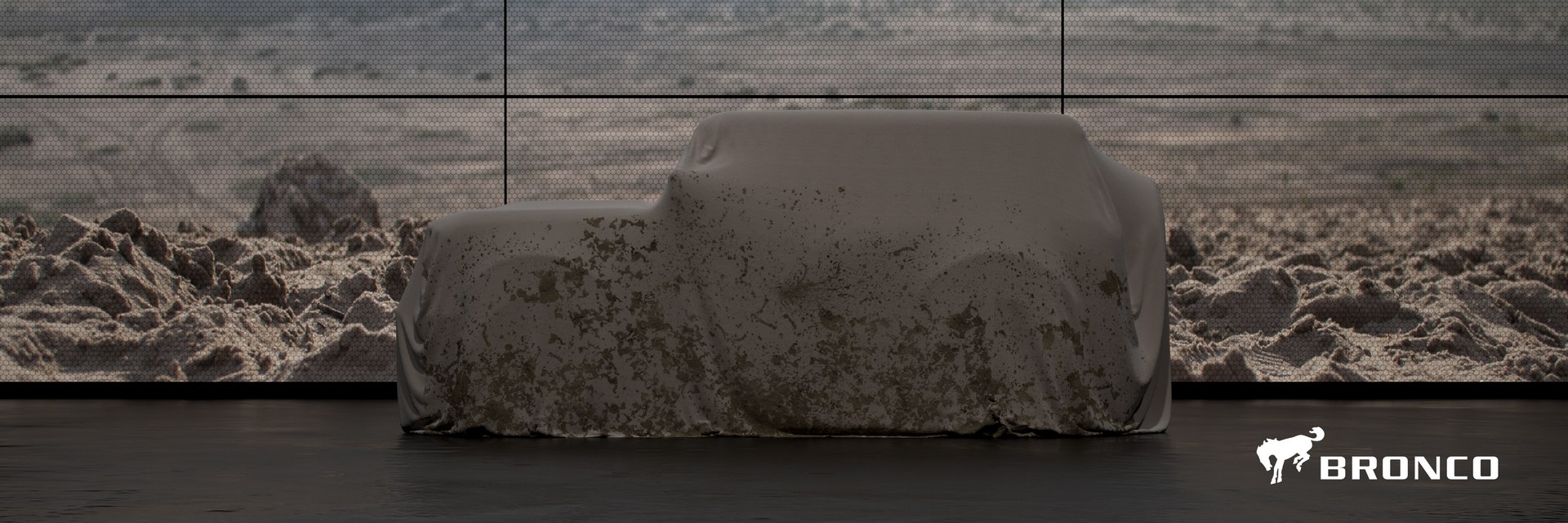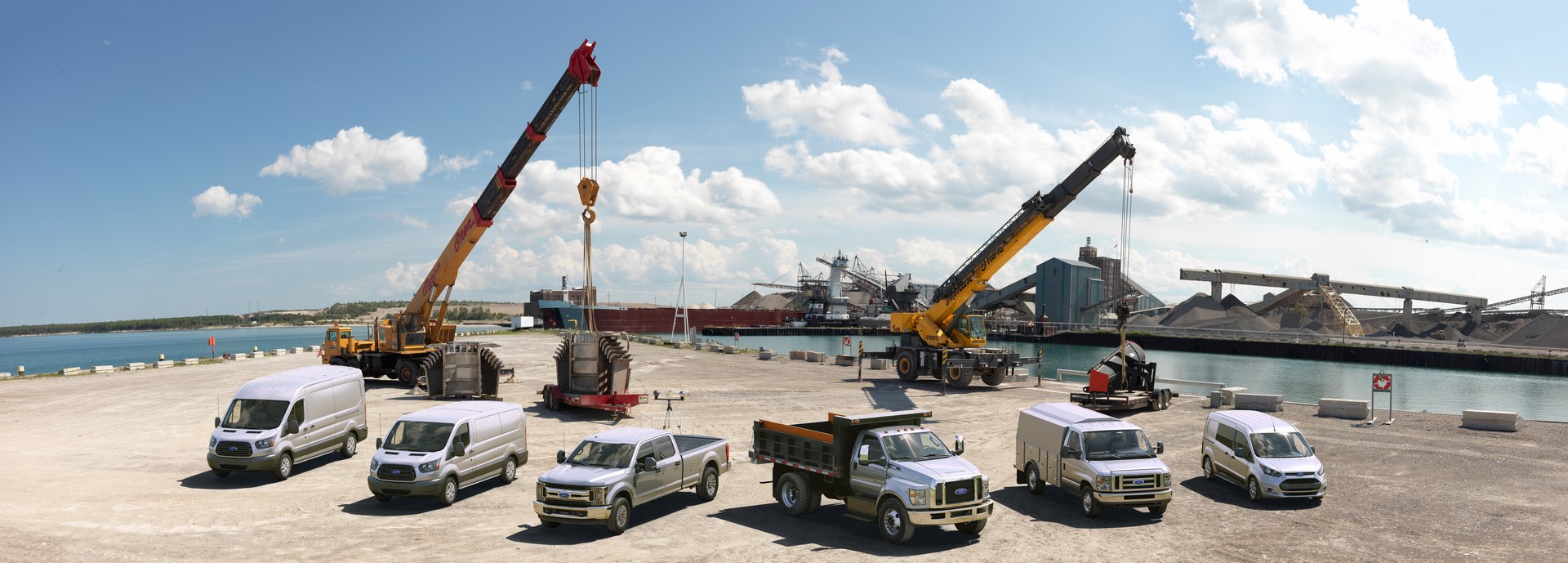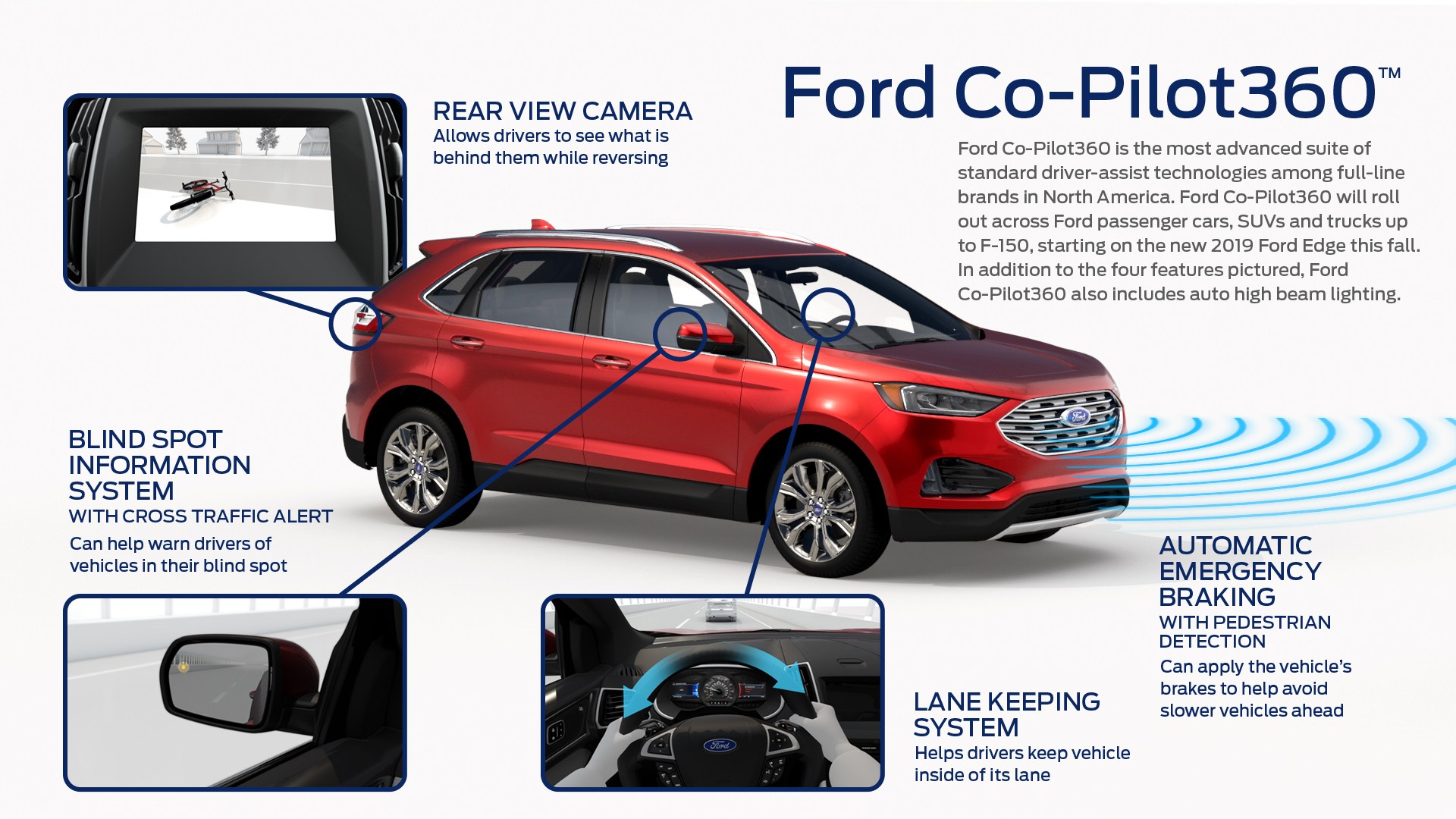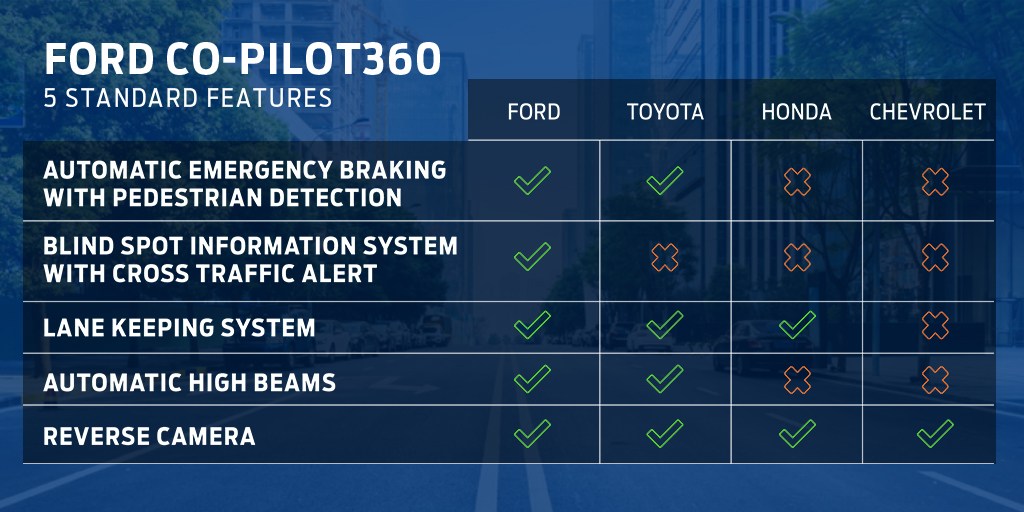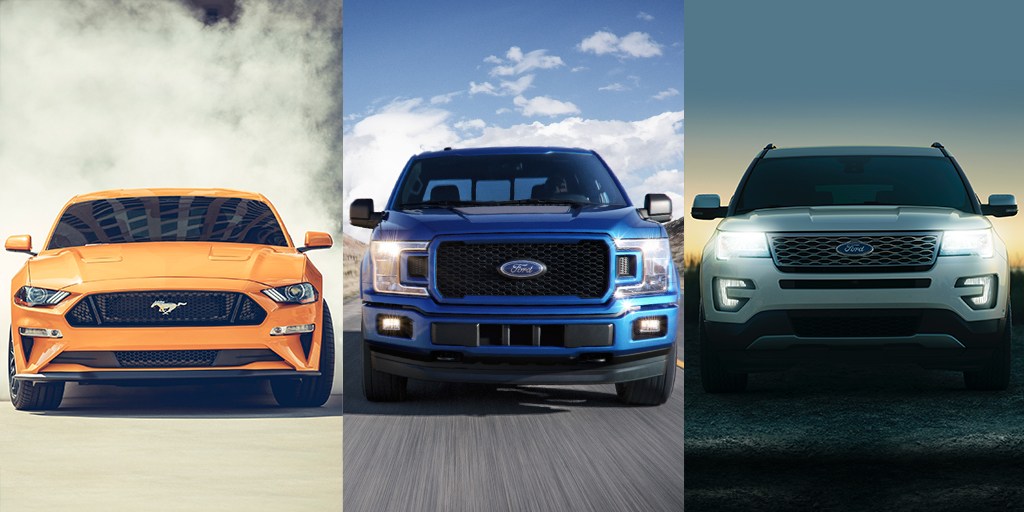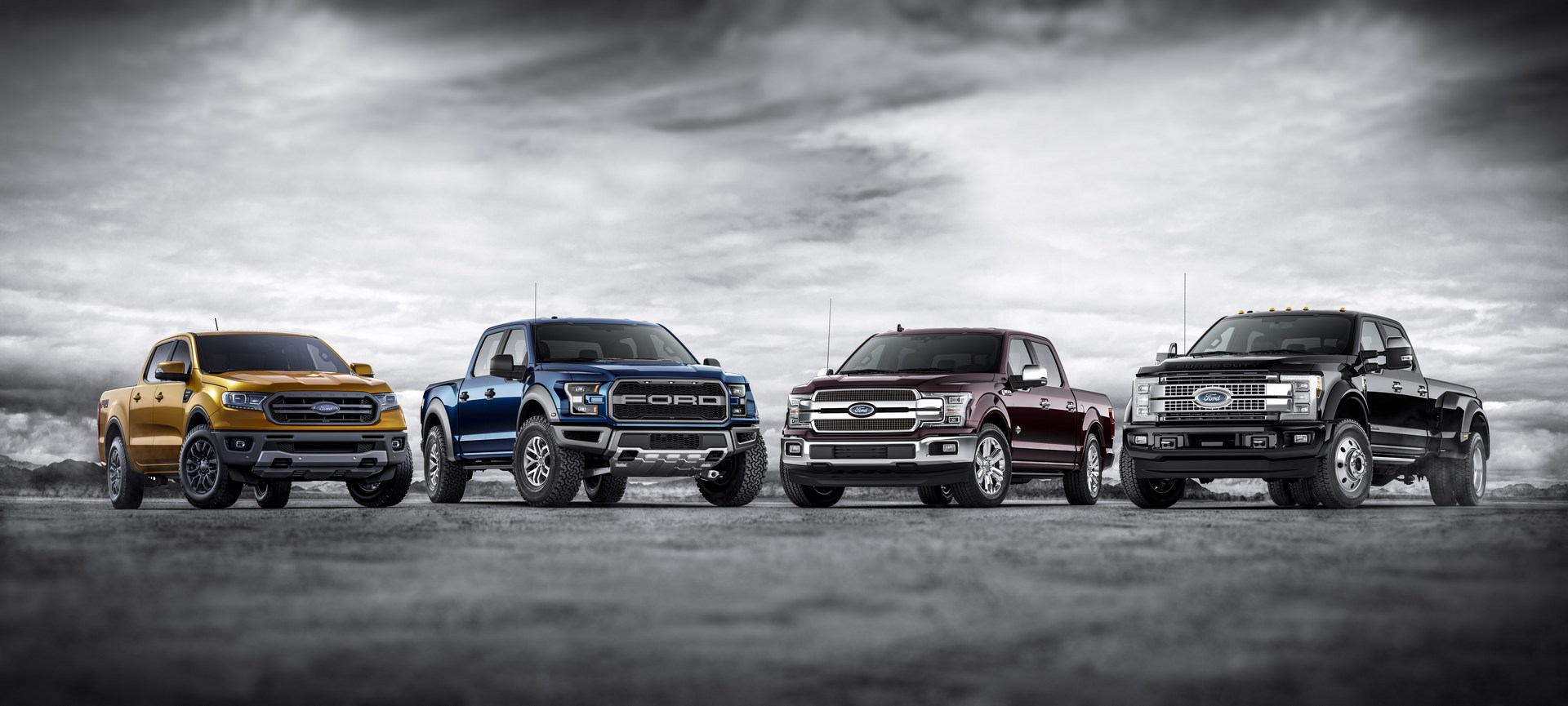Ford’s teaser images were the highlight of today’s future product announcement but they were just a small portion of the overall presentation.
Besides teasing the Bronco and Mustang Shelby GT500, Ford revealed it will have “North America’s freshest lineup” by 2020 as more than 75 percent of its current portfolio will be replaced. The company will also add four new trucks and SUVs such as the Ranger. Ford says this massive overhaul will see the “average showroom age” of its models drop from 5.7 years to just 3.3 years.
On the truck side, Ford will introduce the new F-Series Super Duty next year and it will be sold alongside the Ranger. One year later, the automaker will introduce the new F-150.
Little is known about the redesigned truck but Ford has previously said 90 percent of the manufacturing equipment used to make the current F-150 can be reused for the next-generation model. The automaker also confirmed the truck will have a hybrid powertrain which enables the model to act as a mobile generator for powering tools and other equipment.
On the crossover and SUV side, the Blue Oval will have an “industry-leading lineup of eight SUVs” by 2020. Five of these models will be offered with a hybrid powertrain, while one will be a battery electric vehicle. As we reported in our previous article, Ford will introduce the next-generation Escape and Explorer next year. They will be joined by the Bronco in 2020 and an “off-road small utility” which looks like it could be a Jeep Renegade or Compass competitor.
Ford will also be going “all-in on hybrids” as the fuel-saving tech will be offered on high-volume models including the Bronco, Escape, Explorer, Mustang and F-150. Ford wasn’t ready to go into specifics but said the Mustang Hybrid will be “all about delivering V8-like performance with more low-end torque.”
The automaker went on to say its first “performance battery electric utility” will arrive in 2020. It will be one of six electric vehicles introduced by 2022.
Speaking of electric vehicles, Ford’s Sherif Marakby said “Throwing a charger in the trunk of a vehicle and sending customers on their way isn’t enough to help promote the viability of electric vehicles.” He went on to say Ford is “redesigning the ownership experience to ensure it addresses customer pain points that currently hold back broad adoption today.” That’s not very informative but Ford said their electric vehicles will have an “effortless” recharging system and over-the-air software updates to “enhance capability and features.”
On the commercial side, Ford will introduce a new Transit with 4G LTE connectivity next year. The company will also expand the E-Series lineup and offer modern driver assistance systems – such as automatic emergency braking, lane departure warning and a driver alert system – on models such as the E-Series, F-650 and F-750.
Despite launching a handful of new and redesigned models, Ford intends to cut costs by using flexible architectures and more common parts. The company plans to have five flexible architectures – body-on-frame, front-wheel-drive unibody, rear-wheel-drive unibody, commercial van unibody and BEV – and says “70% of each vehicle’s engineering will be driven from this new architecture approach.” The remaining 30% – such as “grilles, hoods, doors and more” – will be unique to each vehicle.
Lastly, Ford will be rolling out its Co-Pilot360 suite of driver assistance systems to global markets starting this fall. The company says it’s the “most advanced suite of standard driver-assist technologies among full-line brands” and will include automatic emergency braking, a blind spot warning system, lane keeping assist, a rearview camera and automatic high-beam headlights.








